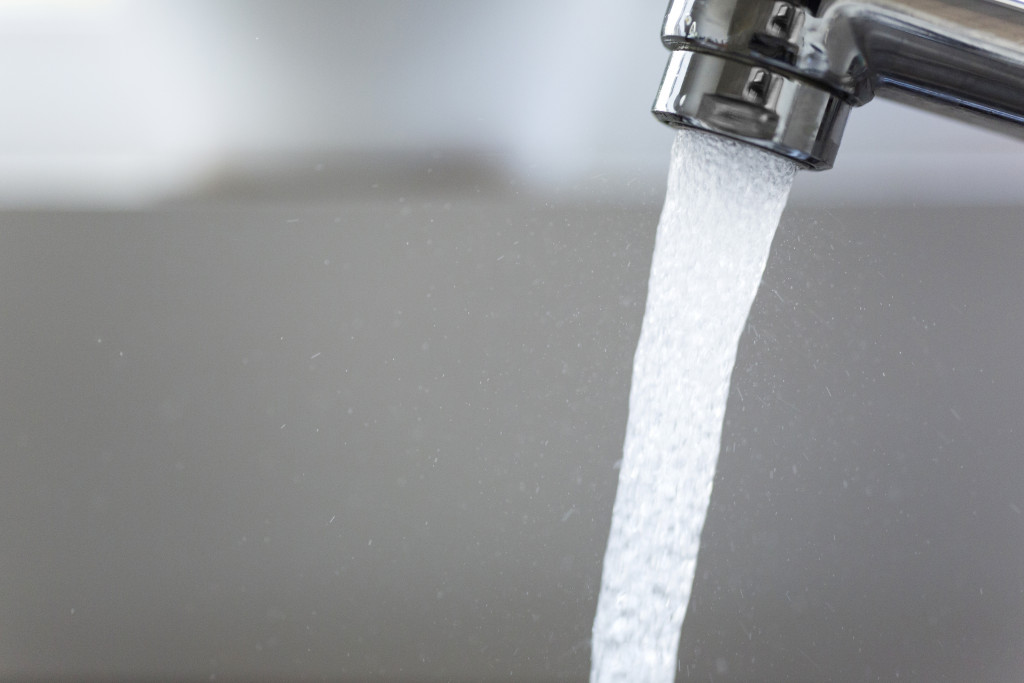- Good air quality is crucial for a healthy home, as poor air can cause respiratory problems and allergies.
- Measures for improving air quality include proper ventilation, indoor plants, natural cleaning products, and air filtration systems.
- High-quality water is also essential and can be achieved by installing a water filter, reverse osmosis system, or water softener system.
- Natural lighting is essential for mood, sleep, and reducing stress levels, and it can be achieved by increasing window size or installing skylights.
Health is undoubtedly the most critical aspect of people’s lives. Being in good health not only ensures a happy and prosperous life for the individual, but it also contributes significantly to the development of society and the economy. The significance of health can be highlighted by several statistics and facts necessary to understand.
According to the World Health Organization (WHO), approximately 15% of the world’s population has some form of disability. This highlights the importance of taking care of our health, as a poor lifestyle can lead to debilitating illnesses and disabilities that can severely damage our quality of life.
Furthermore, studies have shown that healthcare costs are among the most significant contributors to poverty. In the United States, medical bills cause 62% of bankruptcies, and a staggering 3 out of 4 people have been forced to skip or postpone medical treatments due to high costs.
Staying healthy starts with your home. Your surroundings significantly influence your health, and ensuring that your home environment is conducive to good health is essential. There are several elements of a healthy home that you should prioritize to maintain or improve the quality of your life. Here are the ones to prioritize getting.
Air Quality
Air quality is one of the most critical elements of a healthy home that you must prioritize. Poor air quality can trigger respiratory problems, allergies, and other long-term health issues that may significantly impact your well-being.
Indoor air pollution can be up to five times more hazardous than outdoor air pollution, making it imperative to ensure good indoor air quality. Indoor air pollution can be caused by various factors such as dust, chemicals, smoke from cooking or smoking, and mold. These pollutants can cause headaches, respiratory problems, allergies, and even asthma.
Furthermore, research has shown that indoor air pollution can profoundly impact vulnerable people, such as children and older adults. Exposure to air pollutants can lead to lifelong health problems, including cardiovascular diseases and lung cancer. Here are a few ways to achieve good air quality.
Proper Ventilation
Ensuring proper ventilation is the easiest and most effective way to improve your home’s air quality. Good ventilation allows for air circulation and regular airflow, reducing the accumulation of pollutants indoors. Opening windows or installing exhaust fans in bathrooms and kitchens can help keep the air fresh and clean.
Indoor Plants
Indoor plants effectively purify the air by removing toxins from the air. Some plants, such as Areca Palm, Boston Fern, and Spider plants, are particularly effective at improving air quality.
Use Natural Cleaning Products
Many cleaning products contain chemicals that can release harmful toxins into the air. Switching to natural cleaning products can limit the pollutants released into the air during cleaning activities.
Air Filtration Systems
Installing an air filtration system can help remove pollutants from the air, including mold, pollen, and bacteria. These systems trap these pollutants in a filter, producing purer air.
Water Quality

High-quality water at home is essential for health because it can help reduce the risks of certain diseases. Unclear water can contain contaminants, such as heavy metals, chemicals, and other harmful elements linked to various health conditions. This includes stomach illnesses, skin irritations, allergies, and reproductive issues like infertility.
To ensure good water quality at home, there are several measures you can take to improve the quality of your water supply. Here are a few ways:
Install a Water Filter
Installing a simple filter in your kitchen or bathroom can help remove impurities from your drinking water. It’s also important to regularly change the filter according to the manufacturer’s instructions; otherwise, it won’t be as effective in removing contaminants from the water supply.
Consider a Reverse Osmosis System
A reverse osmosis system is more advanced than most filters. It is explicitly designed for purifying drinking water through multiple filtration stages before it reaches you for consumption or uses around the house (i.e., bathing).
Install a Water Softener System
Hard water contains minerals that make it difficult for soap and detergents to lather correctly, as well as cause damage to pipes and washing machines. Installing a water softener system can help reduce limescale buildup and protect plumbing fixtures by removing or lowering minerals like calcium and magnesium.
Natural Lighting

Natural lighting is another essential element of a healthy home. Studies have shown that exposure to natural light can help improve mood and reduce stress levels. It also helps people sleep better by regulating their circadian rhythms, which tell the body when to sleep or wake up.
To prioritize natural lighting at home, you should consider increasing the size of your windows and installing skylights in darker areas of the house. Additionally, paint your walls with lighter colors and remove interior window shutters or blinds during the day to maximize the amount of natural light entering your home.
Final Thoughts
Creating a healthy home environment is essential for your overall health, as it can significantly reduce the risks of developing certain illnesses and disabilities. The elements of a healthy home discussed in this article should help you prioritize the most critical aspects to focus on when ensuring the health of your home and those living inside. These measures make you one step closer to a healthier lifestyle and well-being.

